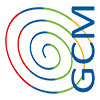Today I want to add a comment by a colleague/customer of FAO, a partecipant in a workshop led by us.
“This experimental laboratory experience provided another wording for concepts belonging to a world apparently beyond FAO, mostly business oriented. The timing seems now crucial as far as personal growth and immediate work applications. Project management is a cumbersome investment of efforts yet it allows for a tracking of methodological situations that practically eliminate risks and improvising while achieving a common goal. Top Quality Management is not only a philosophy and a work approach, but also a work culture and, maybe a lifestyle.
In very practical terms the laboratory consisted in a practical construction project of Leonardo’s bridge in various methodological and timed phases. The bridge is a mixture of self-standing and supporting posts that need to be fitted together in a unique balanced situation. The bridge in itself, for the use of poles, reminds team-work, with the load collaboration/participation required by all.
The bridge construction is a patented project management course whereby the various roles, phases and project management activities are carried out so to allow the team, with the aid of the two trainer advisers, to fully understand the impact of their choices, activities and behaviours by tracking the final
result as a finished, quality oriented product.
3D performance method stands for:
- De-construct or De-fine (analyze a model),
- De-ploy or De-sign (define a model) and
- De-liver (make the model work).
This concept identifies a never ending process that “reduces waste, minimizes conflict or resistance to change, and improves results”.
Together with facilitation systems such as Technology of Participation (ToP), Group Facilitation Methods (GFM) and making reference to other historical project management tools such as PRojects IN Controlled Environments (PRINCE) v.2 or Refresh and Project Management Body of Knowledge (PMBoK) the lab manages to carry the participants through the instinctive working phases first and then through the controlled ones showing the difference in results. The end goal is for “procedures to become mathematics.”
During the lab, references to famous project manager classics were made including W.E Deming, P. Crosby, P. Senge and O. Scharmer and more simply to Kenya’s Mr. Kenyatta adopted “Harambee “(all put together) concept of working together with a common goal.
A separate chapter was related to the different levels of concentration required to carry out some tasks. Compared to sport team games, for example, a penalty has a concentration level that is different from running around the field yet the physical effort may seem less. This also occurs in working teams where components have different stress and concentration levels. Team members also have different speeds worth noting.”
Great feedback from a customer who appreciated the lab and the U theory and curve analysis and that presently, in his daily work, he often feels being in a variety of these movements, sometimes even re-starting the process.
